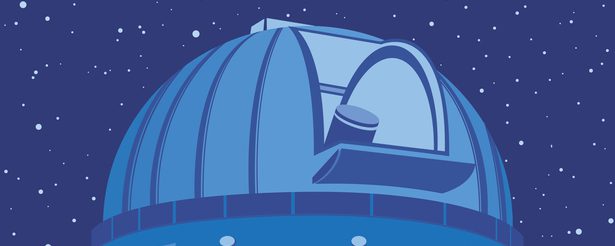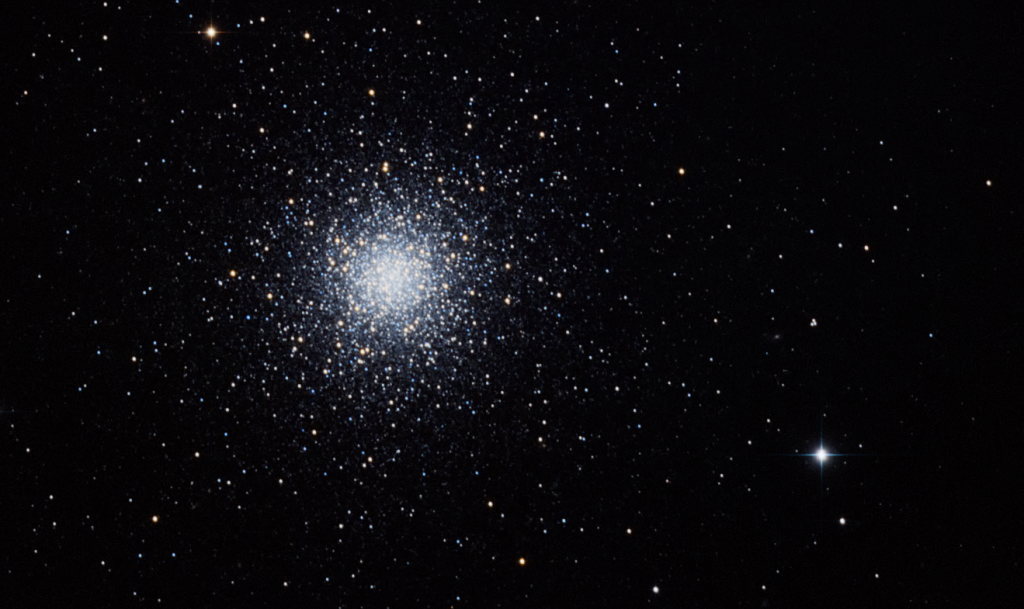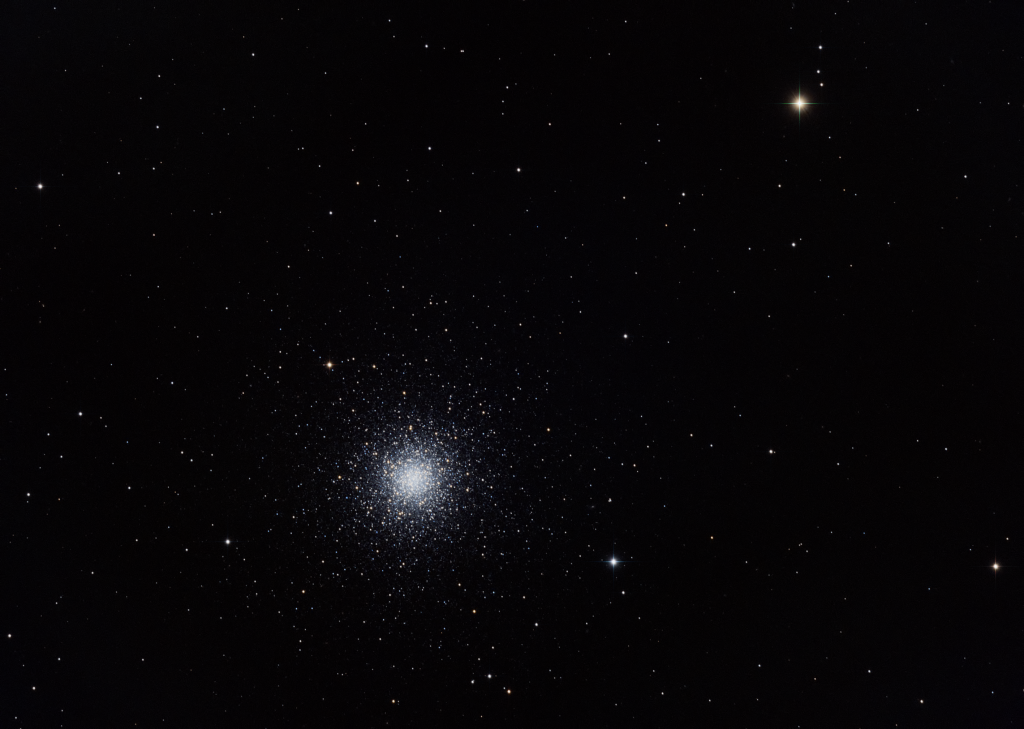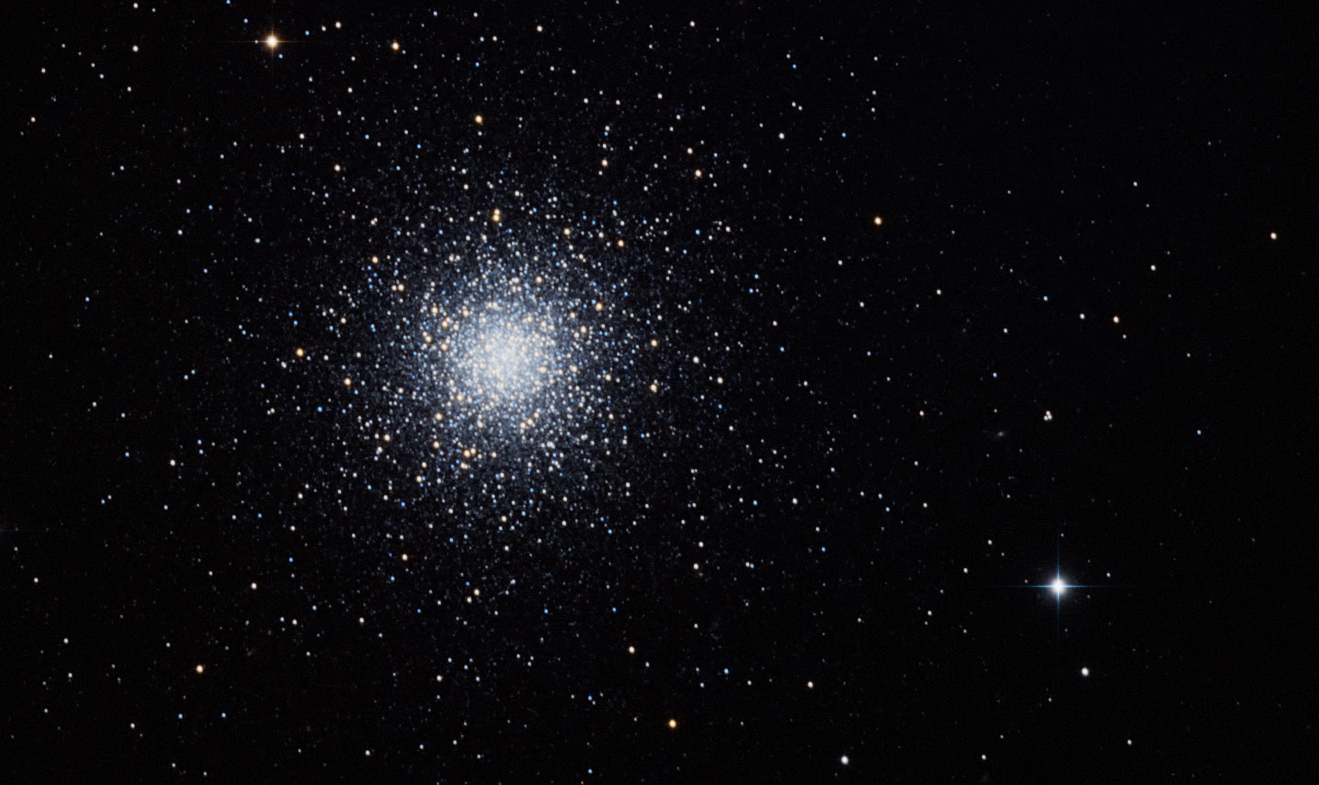
Similar Posts
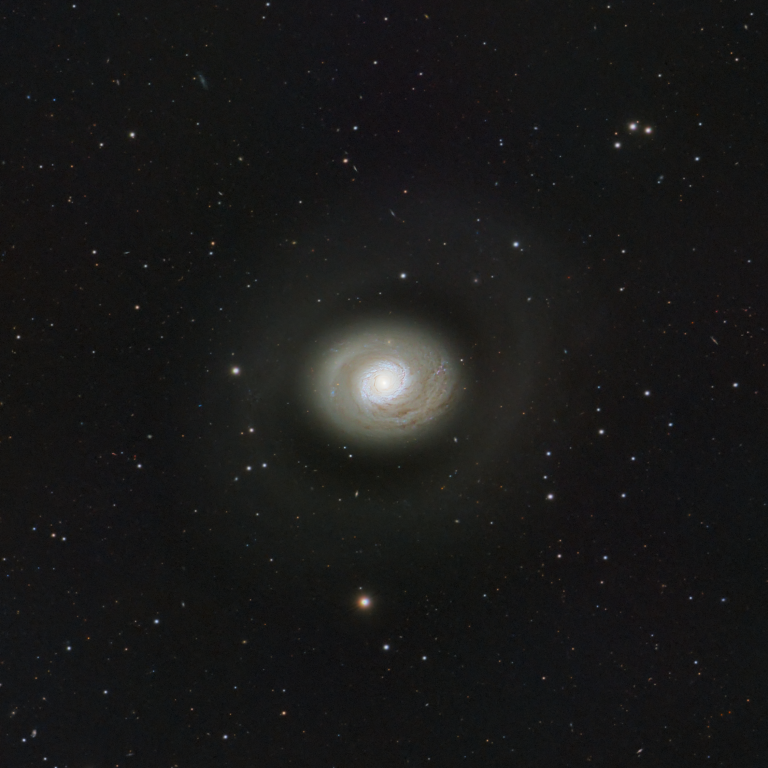
M94 / The “Cat’s Eye Galaxy”
Sometimes called the “Cat’s Eye Galaxy,” this is M94 – about 16 million light years away in the constellation Canes Venatici. You can barely see its faint outer ring surrounding it here, as well as several very distant background galaxies. It’s notable for challenging our understanding of the universe – it appears to have very…
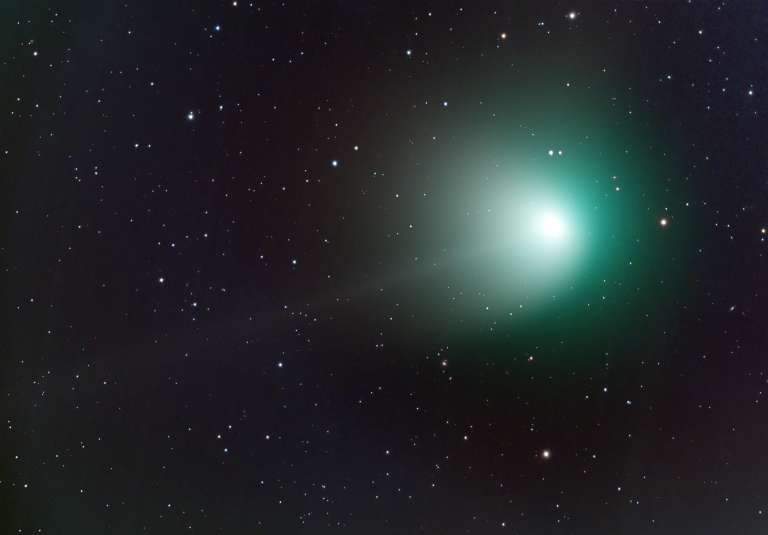
Another look at the “green comet”
I don’t know why the press has latched onto the name “the green comet” for C/2022 E3 (ZTF) – most comets are green, and it’s too dim to see any color at all if you’re viewing it through binoculars or a telescope. But through 2 hours of total exposure time, the colors do emerge, and…
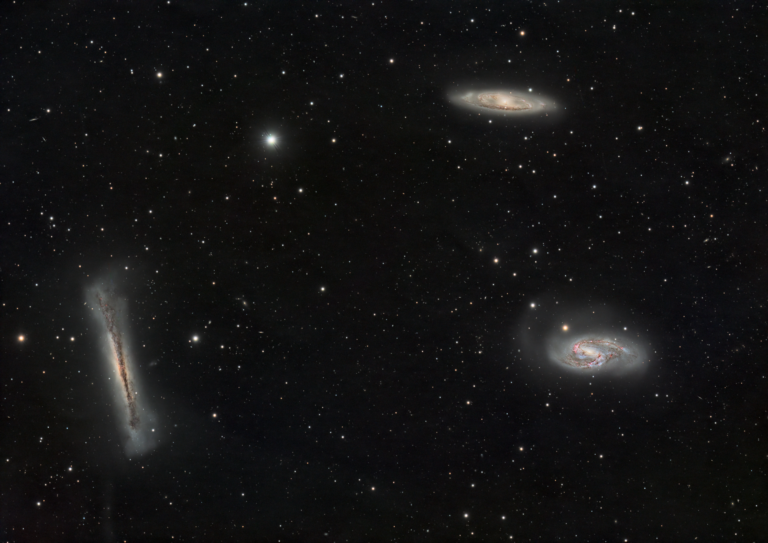
The Leo Trio (again)
It’s been awhile since I imaged the “Leo Trio” (aka Leo Triplet) of galaxies: M65, M66, and NGC 3628. I wanted to see if my latest equipment, software, and somewhat darker skies made a difference. I’d say so… this is a total of 25 hours of exposure time, including some Hydrogen-alpha filter data to pull…
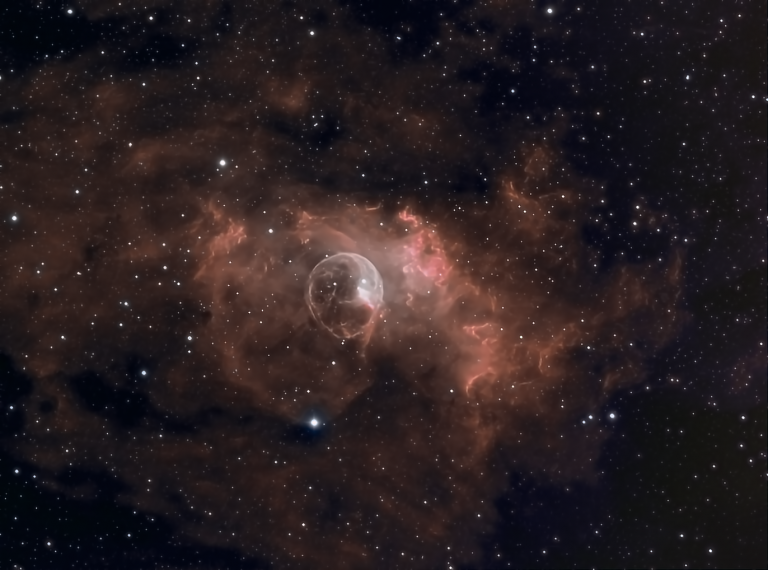
The Bubble Nebula
11 light years away, the “bubble” itself is formed from the solar wind of the large, hot star inside of it. Imaged with narrowband filters.
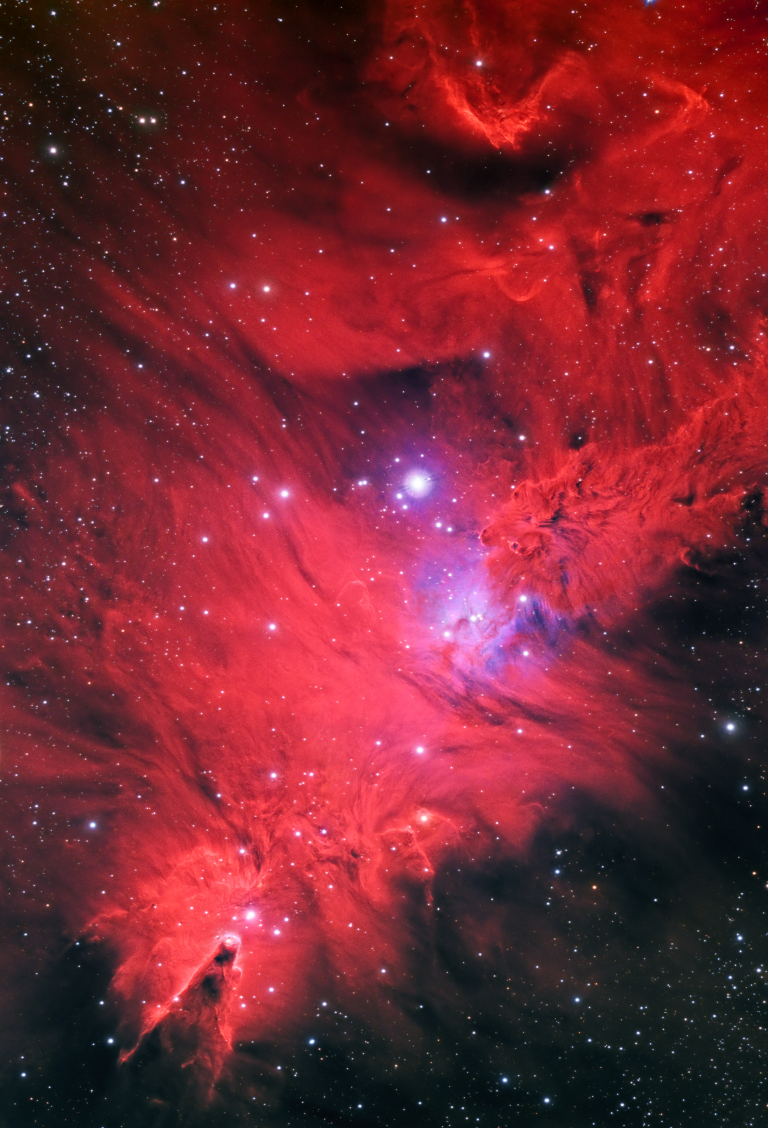
Going deep on the Cone and Fox Fur Nebulas
About 2,700 light-years away within the constellation Monoceros lies the Cone and Fox Fur Nebulas, containing the “Christmas Tree Cluster” of stars as well. I’ve imaged this many times before, but have never been happy with the results. By combining data from last year with more data collected this year however, I finally got enough…
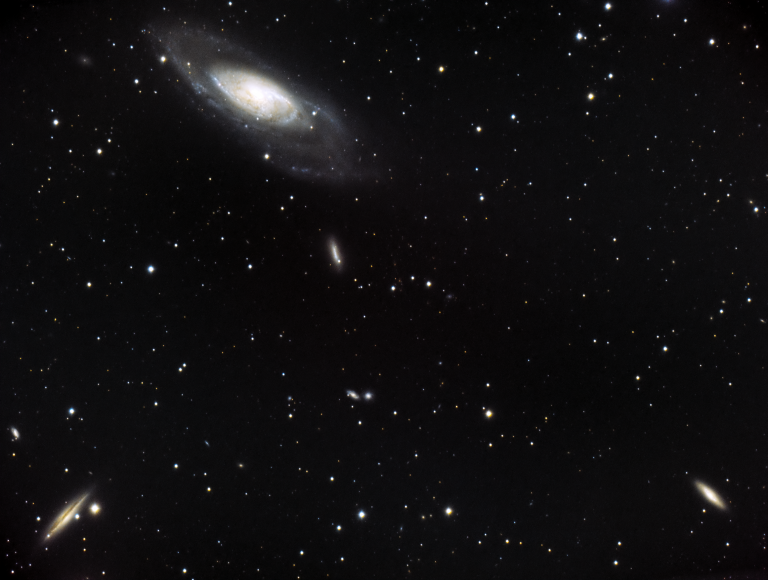
The galaxy M106
The larger galaxy in this image goes only by the boring name “M106”, but it’s anything but boring. About 23 million light-years away, M106 is pretty similar to Andromeda in its size and brightness. But M106 is a lot weirder. In addition to its slightly warped shape, M106 is the home of a giant water-vapor…
